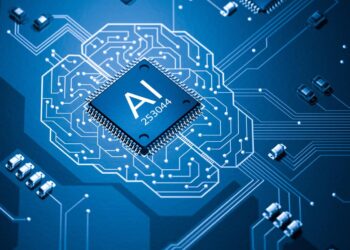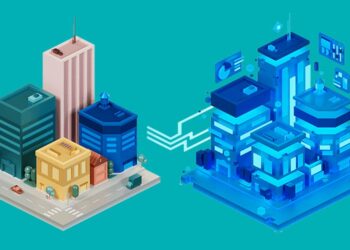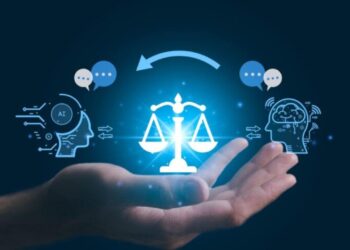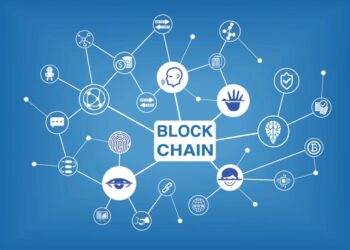The phrase “quantum leap” has long been synonymous with significant, often inexplicable, advancement. In the realm of technology, however, this term has taken on a literal, profound meaning. Quantum technology is no longer a theoretical fantasy; it’s an emergent field rapidly progressing from scientific labs into practical applications, poised to revolutionize everything from computing and communication to medicine and materials science. This in-depth exploration delves into how quantum principles are creating entirely new paradigms, promising a future that transcends the limitations of classical physics and computational methods. Understanding this complex yet fascinating domain is key to grasping the next epoch of human innovation.
The Enigma of the Quantum Realm
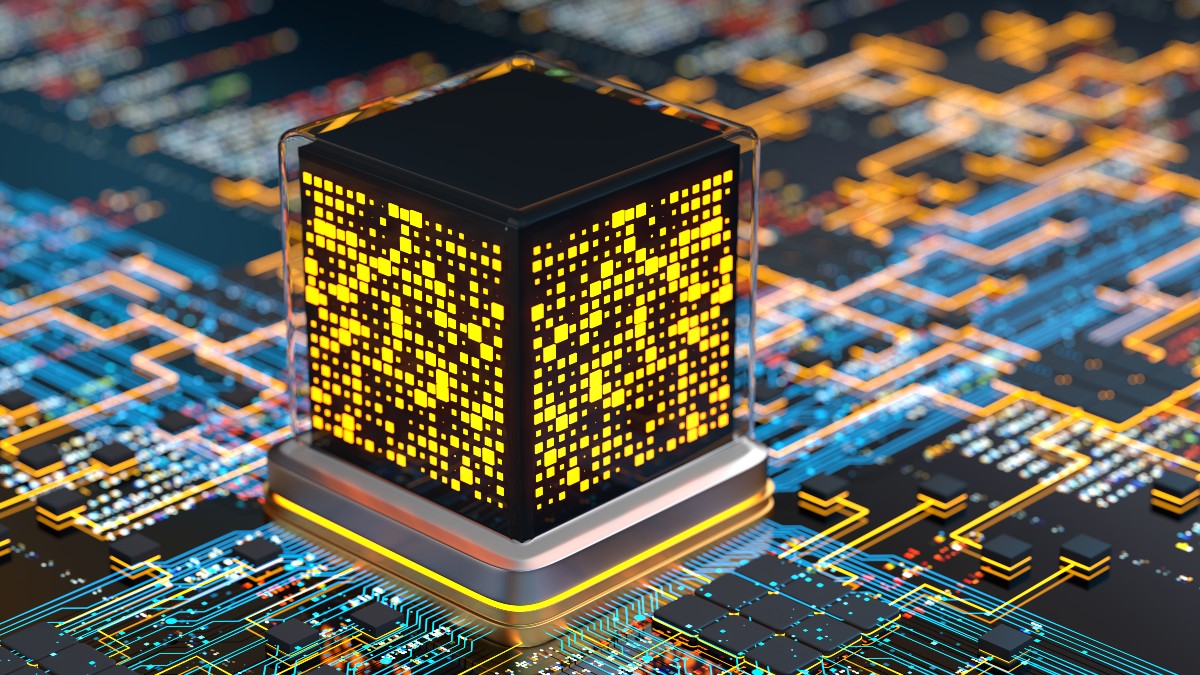
Before delving into the applications, it’s crucial to grasp the fundamental concepts that underpin quantum technology. Unlike the classical world, where objects have definite states (a coin is either heads or tails), the quantum world operates on principles that defy our everyday intuition.
A. Superposition
At the heart of quantum mechanics is the concept of superposition. Imagine a classical computer bit, which can be either a 0 or a 1. A quantum bit, or qubit, can be a 0, a 1, or — astonishingly — both simultaneously. This inherent ability to exist in multiple states at once exponentially increases the information density. For example, two qubits can represent four states at once, three qubits can represent eight, and so on. The number of states a system of n qubits can represent is 2n. This exponential scaling is what gives quantum computers their immense potential power.
B. Entanglement
Quantum entanglement is perhaps the most bewildering yet powerful aspect of quantum mechanics. When two or more qubits become entangled, they form a shared existence where the state of one instantly influences the state of the others, regardless of the distance between them. Albert Einstein famously called this “spooky action at a distance.” This interconnectedness allows for highly secure communication and complex computational operations that are impossible with classical systems. If you measure the state of one entangled qubit, you instantly know the state of its entangled partner, even if they are light-years apart.
C. Quantum Tunneling
Another counter-intuitive phenomenon is quantum tunneling. In the classical world, a ball rolling up a hill needs enough energy to clear the top. In the quantum world, a particle can “tunnel” through the barrier, even if it doesn’t have enough energy to overcome it classically. This principle is not directly used for computation but is fundamental to certain quantum devices, like scanning tunneling microscopes and flash memory, and highlights the bizarre nature of the quantum world.
These principles — superposition and entanglement in particular — form the bedrock upon which quantum computing, communication, and sensing are being built, unlocking capabilities far beyond the reach of conventional technologies.
Quantum Computing
The most publicized application of quantum mechanics is quantum computing. Unlike classical computers that process information sequentially using bits, quantum computers leverage qubits and their unique properties to perform multiple calculations simultaneously.
A. Solving Intractable Problems
For certain types of problems, quantum computers promise to offer solutions that would take classical supercomputers billions of years to complete. These “intractable” problems include:
- Drug Discovery and Materials Science: Simulating molecular interactions with unprecedented accuracy. This could lead to the rapid development of new drugs, superconductors, and catalysts with tailored properties. Understanding molecular behavior at the quantum level is computationally intensive for classical systems, but a natural fit for quantum computers.
- Optimization Problems: Finding the most efficient routes for logistics, optimizing financial portfolios, or even improving traffic flow in smart cities. Quantum annealing, a specific type of quantum computing, is particularly suited for these complex optimization tasks.
- Cryptography: Shor’s algorithm, a quantum algorithm, can theoretically break widely used public-key encryption schemes (like RSA) that secure our online communications. This has significant implications for cybersecurity and national security, driving the development of post-quantum cryptography.
- Financial Modeling: Creating more accurate and complex financial models to predict market behavior, manage risk, and optimize investment strategies. The ability to process vast datasets with many interacting variables makes quantum computing attractive to financial institutions.
- Artificial Intelligence and Machine Learning: Enhancing AI algorithms for more sophisticated pattern recognition, machine learning, and data analysis. Quantum machine learning could lead to breakthroughs in areas like image recognition, natural language processing, and advanced predictive analytics.
B. Current State and Challenges
While the potential is enormous, quantum computing is still in its nascent stages. Current quantum computers, often referred to as Noisy Intermediate-Scale Quantum (NISQ) devices, are limited in the number of qubits and suffer from high error rates due to their extreme fragility (qubits are easily disturbed by their environment).
- Hardware Development: Companies like IBM, Google, and Rigetti are developing various qubit technologies, including superconducting circuits, trapped ions, and photonic qubits, each with its own advantages and challenges. The race to build stable and scalable quantum hardware is intense.
- Error Correction: A major hurdle is developing robust quantum error correction techniques to mitigate the effects of noise and decoherence, which cause qubits to lose their quantum properties.
- Software and Algorithms: Developing quantum algorithms and programming languages that can efficiently harness the power of quantum hardware is an active area of research. Tools and frameworks like Qiskit (IBM) and Cirq (Google) are emerging to help researchers and developers.
- Accessibility: Most quantum computers are currently accessed via the cloud, allowing researchers and developers to experiment with the technology without needing to build their own hardware. This cloud-based access is democratizing early quantum exploration.
The journey to a fault-tolerant, universal quantum computer capable of solving truly world-changing problems is still decades away, but the progress being made is rapid and exciting.
Quantum Communication
Beyond computation, quantum principles are paving the way for inherently secure communication networks.
A. Quantum Key Distribution (QKD)
Quantum Key Distribution (QKD) leverages the laws of quantum mechanics to distribute encryption keys in a way that makes eavesdropping impossible to detect.
- The Principle: QKD relies on the fact that any attempt to measure or intercept a quantum state (like a photon carrying a key bit) will inevitably disturb that state. This disturbance is detectable by the legitimate sender and receiver, immediately alerting them to the presence of an eavesdropper.
- Applications: QKD is already being implemented in pilot projects for highly sensitive communications, such as government agencies, financial institutions, and critical infrastructure. It offers a solution to the threat posed by future quantum computers that could break current encryption methods.
- Challenges: The main limitation of QKD today is its range. Quantum signals degrade over long distances, requiring “trusted nodes” or quantum repeaters to extend the network. Building a global quantum internet is a significant engineering challenge.
B. The Quantum Internet
The long-term vision is a quantum internet, a network capable of transmitting quantum information (qubits) across vast distances. This network would enable:
- Distributed Quantum Computing: Connecting multiple smaller quantum computers to form a larger, more powerful system.
- Highly Secure Communication: Beyond just key distribution, the quantum internet could facilitate truly unhackable communication channels.
- Enhanced Sensing: Combining remote quantum sensors for unprecedented measurement precision.
- Secure Cloud Computing: Performing computations on sensitive data in the cloud without revealing the data itself, using techniques like blind quantum computation.
The development of quantum repeaters and stable quantum memory is crucial for realizing this ambitious vision.
Quantum Sensing and Metrology
Quantum technology is also transforming the field of sensing, enabling measurements with extraordinary precision and sensitivity.
A. Superior Accuracy for Diverse Fields
Quantum sensors exploit quantum properties like superposition and entanglement to detect minute changes in physical quantities.
- Medical Imaging: Quantum sensors could lead to highly sensitive brain imaging techniques (like MEG, magnetoencephalography) that are more compact and powerful, allowing for earlier detection of neurological disorders.
- Navigation Systems: Quantum enhanced inertial navigation systems could provide extremely accurate positioning without relying on GPS, crucial for underwater vehicles, spacecraft, or areas with signal denial.
- Geological Surveys: Detecting subtle changes in gravity fields to identify mineral deposits, underground water reserves, or even predict seismic activity with greater accuracy.
- Environmental Monitoring: Highly sensitive quantum sensors could detect trace amounts of pollutants or greenhouse gases, providing early warnings and better data for environmental protection.
- Fundamental Physics Research: Quantum sensors are vital tools for probing the most fundamental laws of nature, from detecting gravitational waves to searching for dark matter.
- Timing: Quantum clocks, like atomic clocks, are already the most accurate timekeepers, crucial for global navigation systems, telecommunications, and scientific experiments. Future quantum clocks promise even greater stability and precision.
B. Advantages Over Classical Sensors
The quantum advantage in sensing comes from several factors:
- Enhanced Sensitivity: Quantum states are inherently sensitive to external disturbances, which, when controlled, can be harnessed for detecting incredibly weak signals.
- Reduced Noise: Quantum techniques can reduce noise beyond classical limits, allowing for clearer and more precise measurements.
- Miniaturization: In some cases, quantum sensors can be significantly smaller than their classical counterparts, enabling new applications in portable devices.
The development of robust and compact quantum sensors is paving the way for a new generation of measurement devices across various industries.
The Broader Impact

The emergence of quantum technologies extends far beyond academic research or niche applications. Its profound implications will ripple through every facet of society and the global economy.
A. Economic Shifts and New Industries
The “quantum economy” is already taking shape, with significant investments from governments and private companies.
- Job Creation: The demand for quantum engineers, physicists, computer scientists, and quantum-aware professionals will skyrocket, creating entirely new career paths.
- Competitive Advantage: Nations and corporations that lead in quantum research and development will gain a significant strategic and economic advantage, particularly in critical sectors like defense, finance, and advanced manufacturing.
- Disruption and Innovation: Quantum technologies will disrupt existing industries (e.g., cybersecurity, pharmaceutical, logistics) while simultaneously fostering entirely new ones. Companies that fail to adapt may find themselves obsolete.
- Investment and Funding: Venture capital and government funding for quantum startups and research initiatives are rapidly increasing, signaling strong confidence in its future.
B. Geopolitical Implications
The race for quantum supremacy is not just economic; it has significant geopolitical dimensions.
- National Security: Quantum computing’s ability to break current encryption, and quantum communication’s promise of unhackable communication, make quantum technology a critical component of national security strategies.
- Technological Sovereignty: Countries are investing heavily to reduce reliance on foreign quantum technology, aiming for self-sufficiency in this strategically vital domain.
- International Collaboration vs. Competition: While there are instances of international collaboration in basic research, the development and deployment of advanced quantum technologies are increasingly framed by competitive national interests.
C. Ethical and Societal Considerations
As with any powerful technology, quantum’s rise brings forth important ethical and societal questions.
- The Encryption Dilemma: The ability of quantum computers to break current encryption poses a severe threat to global data security. A coordinated global effort to transition to post-quantum cryptography is essential, but it is a massive undertaking.
- Accessibility and Equity: Ensuring equitable access to quantum resources and preventing a “quantum divide” between technologically advanced and developing nations will be crucial.
- Misuse Potential: Like any dual-use technology, quantum computing and communication could potentially be misused, for example, in surveillance or cyber warfare. Establishing ethical guidelines and regulatory frameworks is paramount.
- Workforce Transformation: While new jobs will emerge, the quantum revolution might also automate some highly complex analytical tasks, requiring a significant societal pivot in terms of education and retraining.
Navigating these complex issues responsibly will be as important as the technological advancements themselves.
The Road Ahead
The journey of quantum technology from theoretical curiosity to widespread application is a marathon, not a sprint. However, the milestones being achieved suggest an accelerating pace.
A. Research and Development Focus
Current R&D efforts are concentrated on:
- Scaling Qubit Numbers: Increasing the number of stable, high-fidelity qubits in quantum computers.
- Reducing Error Rates: Improving quantum error correction techniques to achieve fault-tolerant quantum computation.
- Developing Quantum Software: Creating more accessible and powerful programming tools and algorithms for quantum systems.
- Building Quantum Networks: Extending the range and reliability of quantum communication links and exploring quantum repeaters.
- Miniaturization of Sensors: Making quantum sensors more compact and robust for broader real-world applications.
B. Industry Adoption and Use Cases
While full-scale quantum computers are still some time away, industries are already exploring early use cases:
- Financial Institutions: Experimenting with quantum optimization for portfolio management and risk assessment.
- Pharmaceutical Companies: Using quantum simulation for drug discovery and materials science.
- Automotive Industry: Exploring quantum solutions for optimizing supply chains and designing new battery materials.
- Defense and Intelligence: Investing heavily in quantum-safe cryptography and quantum sensing for national security applications.
Early adoption and strategic partnerships between research institutions and industry players are crucial for accelerating the transition of quantum technology from research labs to commercial products and services.
C. Education and Workforce Development
A critical element for the future of quantum technology is the development of a highly skilled workforce.
- University Programs: Universities worldwide are launching dedicated quantum computing and quantum engineering programs.
- Online Courses and Resources: A growing number of online platforms offer courses and workshops to introduce individuals to quantum concepts.
- Industry Training: Companies are investing in training programs to upskill their existing workforce and prepare them for quantum-era challenges and opportunities.
D. Policy and Regulation
Governments worldwide are recognizing the strategic importance of quantum technology and are developing national quantum strategies.
- Funding Initiatives: Large-scale government funding programs for quantum research and infrastructure.
- Ethical Guidelines: Development of ethical frameworks to guide responsible quantum development and deployment.
- Standardization: Efforts to create international standards for quantum communication protocols and post-quantum cryptography.
Conclusion
The “quantum leap” once a metaphor, is now a tangible reality shaping the trajectory of human progress. From the astounding computational power of quantum computers to the unbreakable security of quantum communication and the unparalleled precision of quantum sensors, this revolutionary field is redefining what’s possible. While significant challenges remain, the rapid pace of innovation and the immense potential rewards ensure that quantum technology will continue to be a focal point of scientific, industrial, and geopolitical interest for decades to come. Embracing this new frontier, understanding its complexities, and proactively addressing its ethical implications are essential for humanity to harness the full, transformative power of the quantum realm responsibly, paving the way for an unforeseen and extraordinary future.


